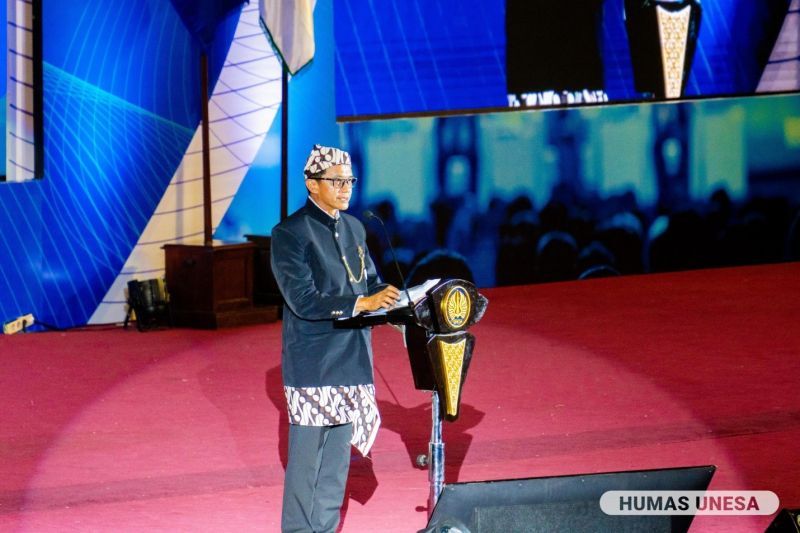
The Director General of Diktiristek, Abdul Haris provided a number of reinforcements at the peak of the 11th Konaspi at Surabaya State University (UNESA).
Unesa.ac.id. SURABAYA—Preparing superior human resources to realize GOLD Indonesia 2045 is the focus and attention of a number of universities, including LPTK (Institute for Educational Personnel Education). They demonstrated this commitment at the XI Indonesian National Education Convention (Konaspi) at Surabaya State University (UNESA), on 8-10 October 2024.
Towards the ideals of a GOLD Indonesia (Era of Just and Prosperous Society) we must < em>by design which refers to the roadmap or sustainable higher education policy direction in the transitional era of national development.
In opening Konaspi, the Director General of Higher Education, Research, and Technology (Dirjen Diktiristek), Abdul Haris emphasized that human resources are the main key to achieving a GOLD Indonesia. The quality of human resources lies in the quality of education.
Improving the quality of education is currently a government priority, especially in responding to three challenges. First, inequality of access. Education participation rates from elementary school, middle school, high school and tertiary level are still low.
Of the 105.62 percent who attended elementary school, only 92, 51 percent were in junior high school, and 86.34 percent were continuing to senior high school. Then, there is a huge inequality at the tertiary level where only 31.45 percent can go to college. Apart from that, from the aspect of people with disabilities, only 2.8 percent have completed college.
Secondly, there is a gap in quality, both between state universities in large urban areas and those in regional areas, as well as between PTN and PTS. Of the number of existing tertiary institutions, there are only 5 PTN-BH that are in the world's top 500.
Third, the lack of relevance of tertiary institutions which can be seen from the number of PT graduates who are not absorbed in employment opportunities according to their field of expertise or competency. .
For this reason, the future strategic policy direction of the Directorate General of Higher Education focuses on several aspects, namely increasing participation in higher education, strengthening quality and relevance, strengthening the quality of lecturers and staff, strengthening the governance system of the Directorate General of Higher Education, and strengthening research , innovation, and community service.
In responding to these three challenges, cooperation and support from universities, including the LPTKNI ranks, is also needed. He hopes that LPTKNI through the 11th Konaspi will continue to be a consistent partner of the government in providing strategic recommendations for accelerating national development.[]
***
Reporter: Saputra (FBS), Mochammad Ja 'far Sodiq (FIP), Tarisa Adistia (FBS), Zakaria Soekarno Putra (Fisipol), Fatimah Najmu Shofa (FBS), and Sindy Riska Fadillah (Fisipol)
Editor: @zam*
Photo: UNESA PR Team
Share It On:






